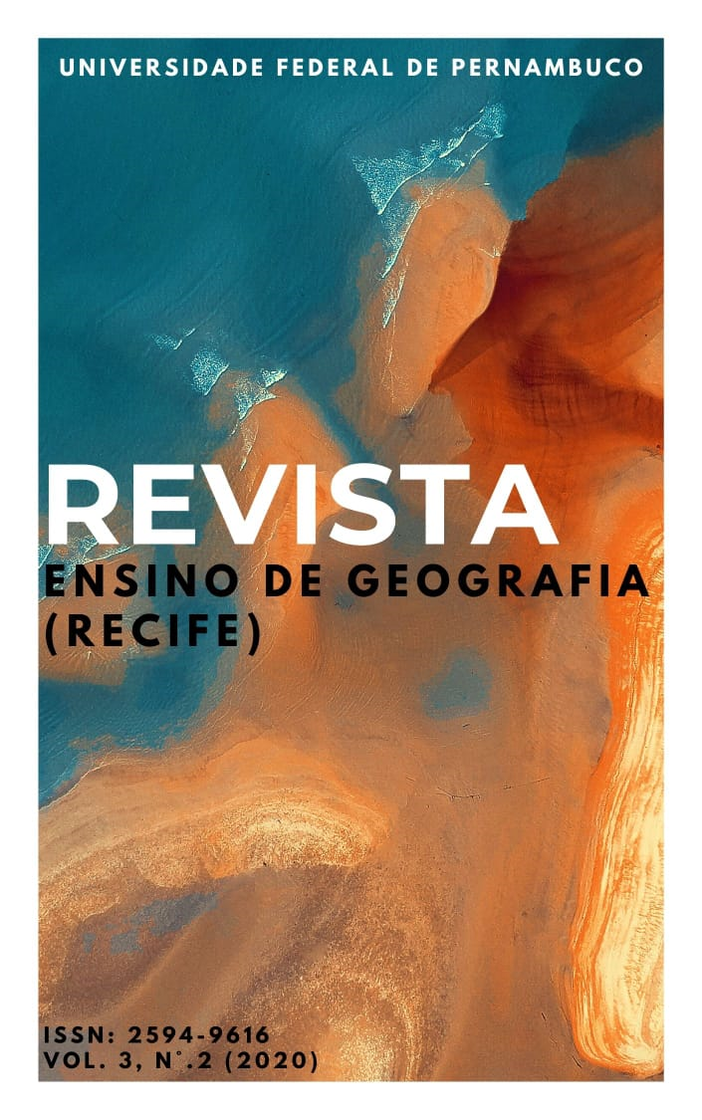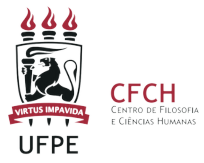Teaching geography and the use of iconographic resources in the construction of significant learning
DOI:
https://doi.org/10.51359/2594-9616.2020.246096Keywords:
Teaching of Geography, Artistic Objects, Teaching MethodologiesAbstract
The purpose of this work is to promote reflection on how recognition takes place, at school, of the relations between Man and the Environment and their influences on the production of new landscapes, that is, through analysis in works artistic works, authored by the modernist painter Tarsila do Amaral. It is also highlighted that the importance of this work is encompassed in the applicability of important researches that demonstrate the potential that can be developed among students, with the use of artistic expressions through methodological applications. Thus, we seek to integrate the formation of ideas and geographical concepts based on the national artistic identity, and as a consequence of this, to inquire about the possibilities and perspectives of what concerns: the formations, meanings and reframings of knowledge and their disciplinary pluralities. The Geography classroom of a 6th grade class of basic education, located in the city of Paulista-PE, was used as a research field, where: diagnoses, reflections and conceptualizations, added the students and teachers expectations for the meaning and expression of the results and insights proposed here
References
AUSUBEL, D.P. (1963). A psicologia da aprendizagem verbal significativa. Nova Iorque,
Grune e Stratton.
AUSUBEL, D.P. (1968). Psicologia educacional: uma visão cognitiva. Nova Iorque, Holt,
Rinehart e Winston.
ALVES, A.C. Lógica – Pensamento formal e argumentação – Elementos para o discurso
jurídico. São Paulo. Quartier Latin, 2000, p.27. 4ª. ed.
BARBOSA, A.M. A imagem no ensino da arte: anos oitenta e novos tempos. 6ª ed. São
Paulo: Perspectiva, 2005.
BARBOSA, A.M. Arte-Educação no Brasil.-5. ed - São Paulo: Perspectiva, 2006.
BOMBINI, R.F.R. O fuzilamento: um olhar de Goya, outro do leitor. In: Salzedas, N. A.
M.(org.) Uma leitura de ver: do visível ao legível. São Paulo: Arte e Ciência Villipress, 2001.
BRANDÃO, C.R. O que é educação. 1ªed. (1981). 33ªed. São Paulo: Brasiliense, 2006.
BRASIL. Lei n° 9.394 de 20 de dezembro de 1996. Lei de diretrizes e Bases da Educação
Nacional. Disponível em: <http://planalo.gov.br/ccivil_03/LEIS/19394.htm>. Acessado em:
mai. de 2020.
Brasil. Secretaria de Educação Fundamental. Parâmetros curriculares nacionais:
introdução aos parâmetros curriculares nacionais/Secretaria de Educação Fundamental.
Brasília: MEC/SEF, 1997. Disponível em:
<http://portal.mec.gov.br/seb/arquivos/pdf/livro01.pdf> Acessado em: 30 de abr. de 2020.
BRASIL. Ministério da Educação. Base Nacional Comum Curricular. (Ministério da
Educação, Brasília, DF: MEC, 2017c. Disponível em:
<http://basenacionalcomum.mec.gov.br/>. Acesso em: 12 de fev. de 2020.
BUORO, A.B. Olhos que Pintam: a leitura da imagem e o ensino da arte. São Paulo:
Educ; Fapesp; Cortez, 2002.
CORRÊA, R.L. Espaço, um conceito-chave da geografia. In: Castro, Iná E. De et al. (Orgs).
Geografia, conceitos e temas. Rio de Janeiro: Bertrand Brasil, 1995.
COLI, J. O que é arte. São Paulo: Brasiliense, 1995.
DUARTE, JR.J.Fr. Por que arte-educação? 1ªed. (1985). 2ª ed. Campinas: Papirus, 2001.
FISCHER, E. A necessidade da arte. Rio de Janeiro: Zahar Editores, 1979.
FONTENELE, S.M.C.; SILVA, K.S. A contribuição do método Montessoriano ao
processo de ensino-aprendizagem na educação infantil. Paraíba: Realize Editora, 2012.
Disponível em:
http://editorarealize.com.br/revistas/fiped/trabalhos/fface8385abbf94b4593a0ed53a0c70f.pdf
Acessado em: 07 de mar. de 2020.
GOWIN, D.B. (1981). Educando. Ithaca, NY, Cornell University Press.
GUIBOURG, R. Introdução ao conhecimento científico, Buenos Aires, Eudeba, 1985.
GUTIÉRREZ, F.; PRADO, C. Ecopedagogia e cidadania planetária. São Paulo, Cortez,
HEIDEGGER, M. A caminho da linguagem. Tradução de Marcia Sá Cavalcante Schuback.
Petrópolis, RJ: Vozes; Bragança Paulista, SP: Editora Universitária São Francisco, 2003.
Imagem 01-A. PAISAGEM com Touro. In: ENCICLOPÉDIA Itaú Cultural de Arte e
Cultura Brasileiras. São Paulo: Itaú Cultural, 2019. Disponível em:
<http://enciclopedia.itaucultural.org.br/obra2328/paisagem-com-touro>. Acesso em: 05 de
abr. 2020. Verbete da Enciclopédia.
ISBN: 978-85-7979-060-7. Acessado em: 2 de set. de 2020.
Imagem 01-B. MORRO da Favela. In: ENCICLOPÉDIA Itaú Cultural de Arte e Cultura
Brasileiras. São Paulo: Itaú Cultural, 2019. Disponível em:
<http://enciclopedia.itaucultural.org.br/obra2324/morro-da-favela>. Acesso em: 05 de abr.
Verbete da Enciclopédia.
ISBN: 978-85-7979-060-7. Acessado em: 2 de abr. de 2020.
Imagem 01-C. SÃO Paulo. In: ENCICLOPÉDIA Itaú Cultural de Arte e Cultura Brasileiras.
São Paulo: Itaú Cultural, 2019. Disponível em:
<http://enciclopedia.itaucultural.org.br/obra2325/sao-paulo>. Acesso em: 05 de abr. 2020.
Verbete da Enciclopédia.
ISBN: 978-85-7979-060-7. Acessado em: 5 de abr. de 2020.
PIAGET, J. O psicodélico em suas relações com a psicologia da criança. Boletim Mensal
da Sociedade Alfred Binet, a. 20, n. 1, p. 18-34; 41-58, 1920.
KANT, I. "Sobre a pedagogia". Piracicaba, Unimep, 1996.
LAROUSSE Cultural, Grande Enciclopédia. [S.l.]: Nova cultural Ltda. 1999. Vol. 13.
SAUSSURE, F. Curso de Linguística geral. Trad. Antonio Chellini, José Paulo Paes e
Izidoro Blinkstein. São Paulo: Cultrix, 1999.
SANTOS, M. A Natureza do Espaço: Técnica e Tempo, Razão e Emoção, 4ªEd, São
Paulo: EDUSP, 2006.
SANTOS, M. Território globalização e fragmentação. São Paulo: Hucitec, 1994.
SIQUEIRA, D.C.O. “Comunicação e Memória: das narrativas às Novas Tecnologias”.
Logos Comunicação e Universidade. (Comunicação e Memória). Rio de Janeiro: Faculdade
de Comunicação Social UERJ, ano 4, nº 7, 2º semestre, 1997.
RIBEIRO, M. I. M. R. B. Tarsila: modernismo e moda nos anos 1920. Nava, v. 1, p. 108,
TOMAZ, C. Memória e Emoções. Ciência Hoje, nº 83, agosto de 1992. VALÉRY, Paul.
Variedades. Tradução: Maiza Martins de Oliveira, Iluminuras, São Paulo, 1999.
WENDELL, N. Metodologias de formação de públicos: experiências com ações artístico-
pedagógicas nas escolas. In: VI Congresso da Associação Brasileira de Pesquisa e Pós-
graduação em Artes Cênicas, 2010, São Paulo. Memória Abrace Digital, 2010.
Downloads
Published
How to Cite
Issue
Section
License
Copyright (c) 2021 Gustavo Gomes Barbosa, Thiago Breno de Medeiros Carmo

This work is licensed under a Creative Commons Attribution 4.0 International License.
Authors who publish with this journal agree to the following terms:- Authors retain copyright and grant the REVISTA ENSINO DE GEOGRAFIA (RECIFE) right of first publication with the work simultaneously licensed under a Creative Commons Attribution NonCommercial International 4.0 (CC BY-NC) that allows others to share the work with an acknowledgement of the work's authorship and initial publication in this journal.
- Authors are able to enter into separate, additional contractual arrangements for the non-exclusive distribution of the journal's published version of the work (e.g., post it to an institutional repository or publish it in a book), with an acknowledgement of its initial publication in this journal.
- Authors are permitted and encouraged to post their work online (e.g., in institutional repositories or on their website) prior to and during the submission process, as it can lead to productive exchanges, as well as earlier and greater citation of published work.



